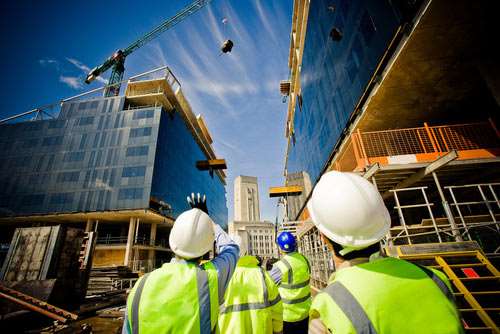
Two years’ ago, Inauro’s Co-CEO & Co-Founder Angus Kennard told us about digitisation challenges within the construction industry and how the Internet of Things (IoT) could help. The challenge of getting myriad stakeholders to move towards the same outcome, without changing how they work, was extremely difficult to surmount.
Most advances have been in project management and not operations. This isn’t surprising considering the work that would be needed to overhaul the complex ecosystem of sub-contractors, stakeholders, vehicles, materials, factories, fuel, OH&S, HR, environmental, machine hire and green-construction considerations – plus the colossal amount of bureaucracy, process management, reporting, administration and compliance issues that go with it all.
On construction sites, workers use paper and eyeball things to store information, while reliance on multiple subcontractors’ separate data systems has resulted in information silos. To many people, this was an omelette that couldn’t be unscrambled.
Then, along came Covid.
It quickly became apparent that sending the construction industry into total lockdown was unviable in Australia. The notion of Aussie tradies being unable to work struck a chord that the mainstream media couldn’t ignore and politicians couldn’t dismiss. Genuine health concerns could not be disregarded either.
This led to greater digitisation finally taking place. Suddenly paper wasn’t allowed on-site – all forms and check-ins had to be digitised and compliance failure was inexcusable. This created an explosion of on-site data to be collected, processed, linked and acted on.
While this was a challenge, it also opened the door to many long-awaited and in some cases surprising efficiencies made possible using IoT. Suddenly data was liberated and insights could be shared with stakeholders who were now connected.
Two-years into the pandemic, new, holistic views of data are being considered, says Kennard.
“We are seeing a real shift in the use of real time data by the more forward thinking construction companies – the rise of digital solutions to help solve point issues has given construction sites a view of the benefits this data could have if shared across systems, leading to increased automation and efficiency gains that could never have been considered before,” Kennard commented.
How IoT is improving productivity
The resulting efficiencies, automation and improvements in the way information is recorded is helping address one of the biggest issues in the construction industry: productivity.
Work sites have traditionally been heavily process-focused because of the potentially dangerous environment, and IoT is helping to streamline this. For instance, IoT sensors detecting noise and dust have effectively rendered manual checking by people carrying microphones and dust sensors, and associated auditing, redundant. This has led to immediate cost savings.
“There really is no discussion to be had – if you can replace a costly, burdensome, manual service by a cheaper, more granular and accurate solution, why wouldn’t you do it!”
Unpopular tasks such as contamination management associated with toilet and ablution blocks can now be automated, and video cameras on cranes can enable real-time monitoring of sites from above – negating the need to fence-off potentially high-risk areas.
The use of cameras for real time monitoring could provide transparency about building construction quality following high-profile structural failings. A more transparent market, including in regards to reporting of defects, is a goal of the NSW Government’s eConstruction Program.
For instance, computer vision on crane-mounted cameras can enable the monitoring, tracking and allocation of every three metres of cement poured to a single truck. Each truck’s telemetry can also be linked to the pour to establish which factory it came from, whether the truck was stuck in traffic or had a failure, and if the operator turned off the mixing tank to save on (increasingly expensive) fuel or experienced any other issue that could result in cement being watered down or the quality compromised. Smart vision and concrete maturing sensors can also monitor the state of the cement and notify when the next layer can be poured (or not).
A digital history of each element, from the factory to the concrete pour, can be recorded and supplied when construction ends and a building is handed over to its operators. This could inform insurance and give building owners better visibility of the state of the quality of construction, helping them decide whether or not to accept ownership.
Digital automation could also help improve trust in on-site incident and near-miss reports, says Kennard. These reports have often been heavily-subjective and created as a last-minute afterthought, or not completed, and are open to manipulation, he says. Automation can also help with compliance related to green-construction, fuel management and spill reporting – all of which have become more challenging issues to deal with in recent years.
Managing fuel is a perennial problem. It’s possible for on-site sensors to detect fuel levels and automatically order more when required. This can improve the reconciliation process and has reduced instances of false-fuel recording and purchase fraud, Kennard says.
Sharing of equipment utilisation and location data could also make the over-ordering of rented machinery (which gets leased by multiple, independent subcontractors) and the subsequent piles of identical equipment lying idle a thing of the past.
Inauro Co-CEO & Co-Founder Angus Kennard leads a panel of industry experts at the IoT Impact conference on 9 June at the Melbourne Convention and Exhibition Centre. Tickets have limited availability and prices rise soon, so don’t miss out – register to attend Australia’s premiere IoT conference now.








